A Working Hypothesis
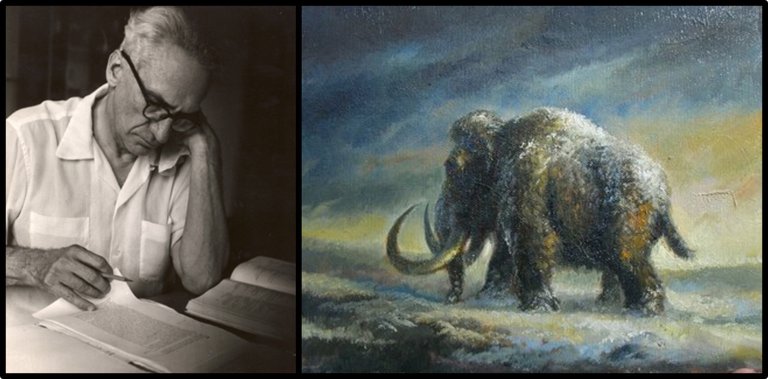
In the fourth section of Chapter IX of Earth in Upheaval Immanuel Velikovsky finally draws together the different threads of his argument and formulates a working hypothesis to explain the Pleistocene Ice Age. This hypothesis is catastrophist in the extreme and involves a planetary pole shift:
Let us assume, as a working hypothesis, that under the impact of a force or the influence of an agent―and the earth does not travel in an empty universe―the axis of the earth shifted or tilted. At that moment an earthquake would make the globe shudder. Air and water would continue to move through inertia; hurricanes would sweep the earth and the seas would rush over continents, carrying gravel and sand and marine animals, and casting them on the land. Heat would be developed, rocks would melt, volcanoes would erupt, lava would flow from fissures in the ruptured ground and cover vast areas. Mountains would spring up from the plains and would travel and climb on the shoulders of other mountains, causing faults and rifts. Lakes would be tilted and emptied, rivers would change their beds; large land areas with all their inhabitants would slip under the sea. Forests would burn, and the hurricanes and wild seas would wrest them from the ground on which they grew and pile them, branch and root, in huge heaps. Seas would turn into deserts, their waters rolling away. ―Velikovsky 124
The changes wrought by such a global catastrophe are precisely those documented by Velikovsky in earlier chapters of Earth in Upheaval:
And if a change in the velocity of the diurnal rotation―slowing it down―should accompany the shifting of the axis, the water confined to the equatorial oceans by centrifugal force would retreat to the poles, and high tides and hurricanes would rush from pole to pole, carrying reindeer and seals to the tropics and desert lions into the Arctic, moving from the equator up to the mountain ridges of the Himalayas and down the African jungles; and crumbled rocks torn from splintering mountains would be scattered over large distances; and herds of animals would be washed from the plains of Siberia. The shifting of the axis would also change the climate of every place, leaving corals in Newfoundland and elephants in Alaska, fig trees in northern Greenland and luxuriant forests in Antarctica. In the event of a rapid shift of the axis, many species and genera of animals on land and in the sea would be destroyed, and civilizations, if any, would be reduced to ruins. ―Velikovsky 124–125
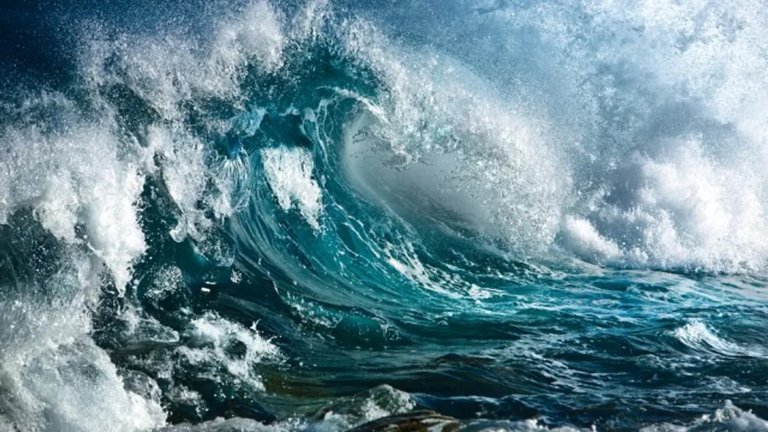
Such a catastrophe could explain the tremendous heat required to evaporate the oceans:
Water evaporated from the oceans would rise in clouds and fall again in torrential rains and snowfalls. Clouds of dust, ejected by numerous volcanoes and swept by hurricanes from the ground, and possibly dust clouds of extraneous origin―if a cometary train of meteorites was the foreign body causing the upheaval―all this dust would keep the rays of the sun from penetrating to the earth. The temperature under the clouds would be reduced, but close to the ground it would be higher than normal because the heated earth would, by convection, dissipate its heat into the atmosphere. Great streams would be formed by the melting ice of the polar regions, carried out of the Polar Circle, and heated by the ground. Glaciers from the mountains would dissolve and inundate the valleys. In higher and in temperate latitudes the falling snow would turn to water or even vapor before reaching the ground or soon thereafter. For many months and probably years, the snow falling on the ground would melt and run in great streams to the sea, cutting new river channels and carrying off great masses of debris. ―Velikovsky 125
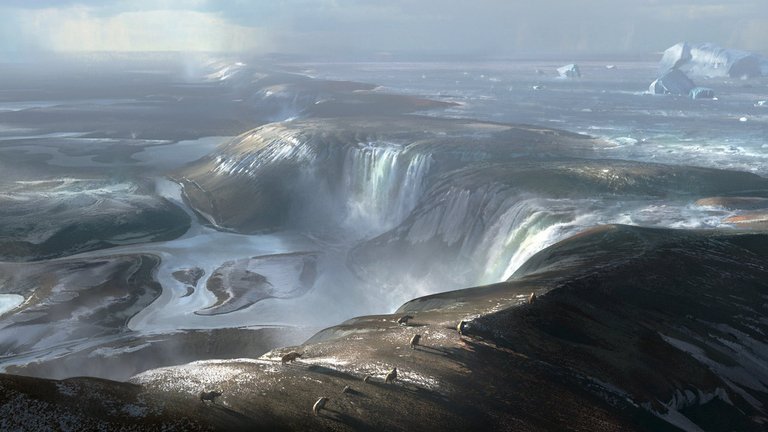
Such a catastrophe could also explain the subsequent cold required to produce the glacial ice caps:
Falling again and again in a sunless world, the snow, shielded from the sun’s rays by thick clouds enveloping the earth, would finally cool the ground to the point where it would turn, not into water, but into ice. At first this ice would not lie firmly on the ground; from inclines and slopes it would slide down to the deeper valleys and then toward the sea. Large icebergs would fill the sea and, tossing about, melt and drop a load of stones or other detrital material to the bottom; other icebergs, floating over valleys filled with water, would deposit their loads there. In the course of the years the incessant action of the snow would cool the ground in the higher latitudes to such an extent that a permanent cover would be built. And the earth would go on shuddering for centuries, slowly quieting down, and as time passed one after another the volcanoes would burn themselves out. ―Velikovsky 125–126
Velikovsky believes that a pole-shift can explain all the evidence we find when we examine the planet’s fossil record. Without such an all-embracing hypothesis it would be necessary to find innumerable separate causes for each and every phenomenon observed.
Outstanding Puzzles
Velikovsky reminds us that the Pleistocene Ice Age is still beset by numerous inexplicable phenomena. He cites five conventional scientists in support of this fact: C R Longwell, A Knopf, R F Flint, R A Daly, and L C Eiseley.
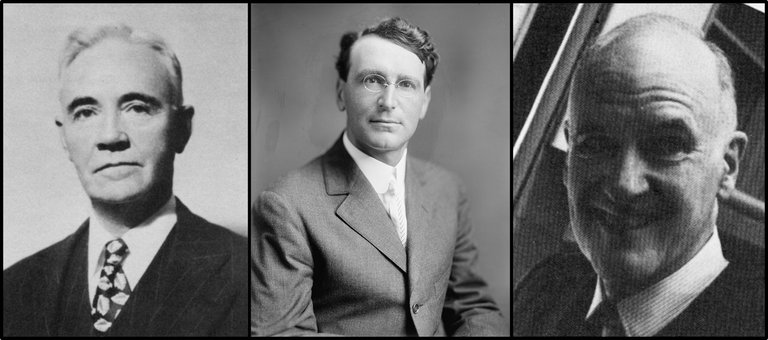
Chester Ray Longwell, Adolph Knopf and Richard Foster Flint were American geologists. Longwell specialized in the study of the Basin and Range Province, a vast region that covers most of Nevada & Arizona in the United States, and Sonora & Sinaloa in Mexico. Knopf’s fields of interest included petrology, mineralogy and geochronology. Flint, who has been cited numerous times in Earth in Upheaval, was an expert on the glacial period in North America. All three served as Professors of Geology at Yale University. In 1939 they jointly authored A Textbook of Geology, which Velikovsky cites here. Curiously, Velikovsky alters slightly the order of the sentences he quotes. The original passage reads:
But although mountains give aid in solving many problems relating to the Earth, they also present mysteries in themselves. Why have sea floors of remote periods become the lofty highlands of today? What generates the enormous forces that bend, break, and mash the rocks in mountain zones? These questions still await satisfactory answers; but the architectural features of great ranges at least offer hints as to their origin, and are worthy of study for their own sake. ―Longwell, Knopf & Flint 405
Reginald Aldworth Daly was a Canadian geologist. Like Flint, he too has already been cited in Earth in Upheaval. Daly was an early advocate of Alfred Wegener’s theory of continental drift. He also proposed an impact theory for the origin of the Earth’s Moon―the explanation which is currently favoured by a majority of planetary scientists. Velikovsky quotes from his 1934 book The Changing World of the Ice Age:
The question, “What is the cause of excessive glaciation?” is instant and inevitable. Geologists do not know the cause. They have published a half score of hypotheses about it, and agree not at all about the validity of any ... At present the cause of excessive ice-making on the lands remains a baffling mystery, a major question for the future reader of earth’s riddles. However, while the cause is obscure, there should be no doubt about the fact. ―Daly 15 ... 16
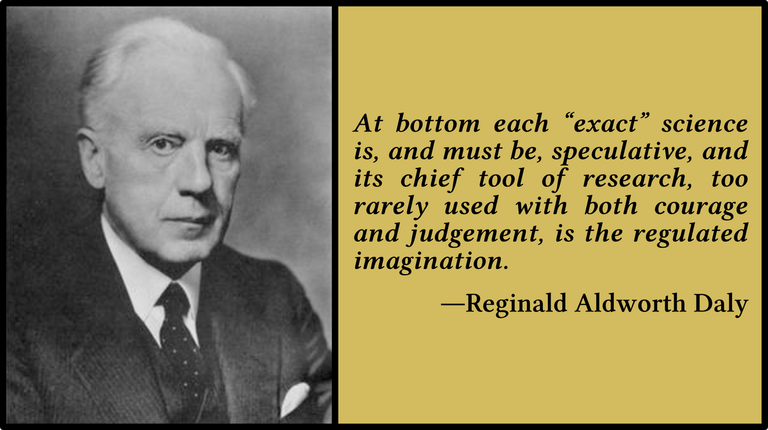
In this passage Daly also refutes the current view that the ice ages are caused by Milankovitch Cycles:
The resulting, so-called astronomical theory demands alternation of glacial conditions between the northern and southern hemispheres, each complete cycle taking tens of thousands of years. But the latest field studies seem to forbid belief in that alternation. On the contrary, an immortal astronomer on the Moon would, more probably, have witnessed synchronous Pleistocene glaciation on both sides of the earth’s equator. Then, also, the astronomical theory proves too much. If its principles were of themselves alone responsible for excessive land ice, there should have been hundreds of Glacial epochs in earth history. There were indeed glaciations long before the Pleistocene Period began, but merely enough to prove their rarity. ―Daly 15
In support of this view Daly cites Ice Ages Recent and Ancient by another Canadian geologist Arthur Philemon Coleman. Velikovsky quoted from this same work in The Cause of the Ice Ages, the opening section of Chapter VIII.
Loren Corey Eiseley was an American anthropologist. Velikovsky quotes from a paper he wrote for American Anthropologist in 1946, when he was head of the Department of Sociology and Anthropology at Oberlin College, Ohio. The subject of this paper is the extinction of the megafauna at the end of the Pleistocene. Once again, Velikovsky has slightly altered what Eiseley actually wrote:
Yet fascinating though the subject of extinction is, it is perhaps significant that―so far as I am aware―there exists no volume in English devoted to its elucidation. There is a simple reason for this. Theories are many, but most unprovable. Or pertinent objections to their general usefulness can be raised, even if we grant their applicability in particular instances. It is this situation that causes the biologist to despair as he surveys the extinction of so many species and genera in the closing Pleistocene. Are there many particularistic explanations chancing to correlate roughly in time? Or did the climatic events attendant on the glacial retreat in some manner affect animals of quite diverse habits and physical structure? ―Eiseley 54

Velikovsky mentions three puzzling phenomena that still cry out for a scientific explanation:
What caused tropical forests to grow in polar regions? What caused volcanic activity on a great scale in the past and lava flows on land and in the ocean beds? What caused earthquakes to be so numerous and violent in the past? Puzzlement, despair, and frustration are the only answers to each and every one of these phenomena. ―Velikovsky 126
Velikovsky concludes this short section with a criticism of Uniformitarianism, which has no answer to these outstanding puzzles:
The theories of uniformity and evolution maintain that the geological record bears witness that from time immemorial, even from the time this planet began its existence, only minutes changes―caused by the wind blowing on the rocks, the sand grains swimming to the sea―accumulated into vast changes. These causes, however, are inadequate to explain the great revolutions in nature, and they evoke expressions of futility on the part of the specialists, each in his field. ―Velikovsky 126–127
The Pole-Shift Hypothesis
Velikovsky’s pole-shift hypothesis―or a version of it―has been recently revived by two conventional scientists as an explanation of the Pleistocene glaciations. Willy Wölfli & Walter Baltensperger were perhaps wise to wait until they were in their seventies before expressing such views. Had they shown an interest in pole shifts at the outset of their careers, they would probably never have been taken seriously by their colleagues. It is to their credit that they acknowledge the pioneering work of Velikovsky, and are happy to mention him in their papers (though not in the chapter they contributed to Hwee-San Lim’s New Achievements in Geoscience (2012).

Willy Wölfli (1930–2014) was a Swiss nuclear physicist, who worked for many years at the Accelerator Mass Spectrometry (AMS) facility of the Swiss Federal Institute of Technology (ETH) in Zürich. AMS is used for radiocarbon dating, among other things. Walter Baltensperger (1927–2015) was also a Swiss physicist. He spent much of his career at the Centro Brasileiro de Pesquisas Físicas (CBPF) in Rio de Janeiro, Brazil. For the last ten years of his life he headed ETH’s research commission, where Wölfli was one of his colleagues. Between 1999 and 2014 the pair co-authored a number of papers in which they sought to place Velikovskian catastrophism on what they considered a scientific foundation:
Between 1999 and revised up to 2018 a series of papers proposing the Planet-Z Hypothesis were published by a group of physicists and astronomers, including the eminent astronomer Willy Woelfli; these would seek to revise and augment the ideas of Immanuel Velikovsky with more realistic physics ...
The Planet Z hypothesis is granted a greater degree of scientific credibility and exposure than it might otherwise attain, due to the eminence of the authors and its presence on the Cornell University online archive. Physics professors can perhaps cite Velikovsky without risking credibility―but no-one else could expect to have similar work published on such prestigious platforms.
The co-authors of the series of papers are Professor emeritus Dr Willy Woelfli and Professor Dr Walter Baltensperger, together with Robert Nufer, who describes himself as an amateur astronomer with a particular interest in comets ...
The 1999 paper ... introduces the concept of a periodic close approach by an additional planet as a possible explanation for Earth’s climatic changes in the past few million years ... The model simulates a planet in an eccentric Earth-crossing orbit as a principal cause of the Pleistocene ice ages between 3.5m years ago and its (apparent) end 11.5k years ago; this planet they term ‘Z’ to substitute for Velikovsky’s rogue ‘Venus’. The highly eccentric orbit of this hypothetical body allowed several close approaches during the Pleistocene Ice Age; during these encounters, especially during its final pass, the tidal forces deformed the Earth resulting in a pole shift that dragged the North Pole away from Greenland to its present location. The final close-encounter resulted in the break-up of Z which no longer exists. The age of ice is therefore considered to be over and we are back to the stable conditions that existed back in the Miocene epoch.
The hypothesis stresses that the Earth’s obliquity was scarcely affected by the Pleistocene encounters and that the geographical pole shift was caused by a tidal bulge resultant from the close approach of Z, which altered the rotational balance. They then proceed to calculate the mass, structure and orbital properties of the transitory planet in order to cause the required tidal effects. In gradualist geological theories the trigger for ice ages is the drift of a continent over one or both of the poles; in a catastrophic event such a transition could take place more rapidly due to a pole-shift.
The co-authors comment on the doubtful physics underlying Velikovsky’s original astronomy. Much stress is also placed upon his letters to Albert Einstein and the physicist’s reply: “Catastrophes yes, Venus―no!” ―Dunbavin 35

This quotation also appeared in an earlier article in this series. Dunbavin can’t resist commenting: What a marketing coup that was for an author! But, as we have seen, Einstein’s endorsement of Velikovsky’s catastrophism has cut little ice with mainstream academics. Einstein may have been a genius when it came to physics, but his opinions in other fields were not to be taken seriously.
Wölfli & Baltensperger accept the validity of the Milankovitch Cycles but believe that these alone are inadequate to explain the way Earth cycles into and out of glaciations during an ice age. Pole shifts are required to complete the picture, and these, they believe, were caused by passages of Planet Z.
And that’s a good place to stop.
References
- Arthur Philemon Coleman, Ice Ages Recent and Ancient, The Macmillan Company, New York (1926)
- Reginald Aldworth Daly, The Changing World of the Ice Age, Yale University Press, New Haven, Connecticut (1934)
- Paul Dunbavin, Throwing Planets Around, Prehistory Papers: Cross-Disciplinary Studies into Our Past, Volume 1, Pages 31–45, Third Millennium Publishing, London (2020)
- Loren Corey Eiseley, The Fire-Drive and the Extinction of the Terminal Pleistocene Fauna, American Anthropologist, Volume 48, Number 1, Pages 54–59, American Anthropological Association, George Banta Publishing Company, Menasha, Wisconsin (1946)
- C R Longwell, A Knopf, R F Flint, A Textbook of Geology, Part 1: Physical Geology, John Wiley & Sons, Inc, New York (1939)
- Willy Wölfli & Walter Baltensperger, What Caused the Ice Ages? Hwee-San Lim (editor), New Achievements in Geoscience, Pages 131–152, InTech, Rijeka, Croatia (2012)
- Immanuel Velikovsky, Earth in Upheaval, Pocket Books, Simon & Schuster, New York (1955, 1977)
Image Credits
- Immanuel Velikovsky: Anonymous Photograph, Copyright Unknown
- Woolly Mammoth: © Bob Eggleton (artist), Fair Use
- Megatsunami: © irabel8 (artist), Fair Use
- Glacial Flood: © Chase Stone (artist), Imperial College London, Fair Use
- C R Longwell: © National Academy of Sciences, Washington, DC, Fair Use
- A Knopf: Harris & Ewing (photographers), Library of Congress, Washington, DC, Public Domain
- R F Flint: Anonymous Photograph, Copyright Unknown, Fair Use
- Reginald Aldworth Daly: Anonymous Photograph, Copyright Unknown, Fair Use
- Loren Corey Eiseley: Frank Ross (photographer), © The Pennsylvania Gazette, University of Pennsylvania, University Archives and Records Center, Fair Use
- Willy Wölfli: AMS Facility, ETH Zurich, Fair Use
- Walter Baltensperger: Anonymous Photograph, Copyright Unknown, Fair Use

Thanks for your contribution to the STEMsocial community. Feel free to join us on discord to get to know the rest of us!
Please consider delegating to the @stemsocial account (85% of the curation rewards are returned).
You may also include @stemsocial as a beneficiary of the rewards of this post to get a stronger support.